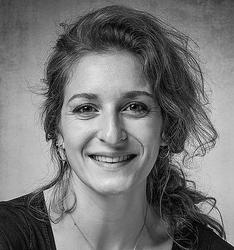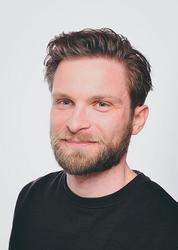URL: https://vffd.desy.de/e25/e338221/index_ger.html
Breadcrumb Navigation
Promotionspreis 2023
Der Promotionspreis geht zu gleichen Teilen an Frau Dr. Annika Lena Rudolph für ihre Dissertation mit dem Titel
“Emission of Multiple Messengers from Gamma-Ray Bursts”
und an Herrn Dr. Dennis Mayer für seine Dissertation mit dem Titel
“Time-resolved X-ray Spectroscopy of 2-Thiouracil”
Annika Rudolph was born on April 11th, 1992, in Malsch, Germany. She studied for her Bachelor and Master at the KIT Karlsruhe, when she joined the theoretical astroparticle physics group at DESY (Zeuthen/Berlin) already for her Master thesis in 2017. Her consecutive PhD thesis at DESY and Humboldt university on the emission of multiple messengers from Gamma-Ray Bursts was performed under the supervision of Walter Winter, and was defended on May 20th, 2022 in Zeuthen.
Gamma-Ray Bursts are very intensive outburst of energy in gamma rays, indicative for the efficient acceleration of particles by this cosmic accelerator class. Because of the amount of energy ejected, they could also potentially accelerate and power the highest energetic particles observed ever, the so-called “Ultra-High-Energy Cosmic Rays” (UHECRs). Annika Rudolph has simulated these Gamma-Ray Bursts and has demonstrated that cosmic rays will lead to new signatures across the electromagnetic spectrum, and she has also calculated the consequences for the production of astrophysical neutrinos. The methods developed go significantly beyond the state-of-the-art by combining the dynamics of the outflow with the microphysics describing the electromagnetic radiation.
Her PhD thesis has led to four first-author publications, and several contributions at international conferences such as TeVPA 2019 in Sydney, Australia and an invited overview talk at the “KM3NeT Townhall meeting 2022” in Catania, Italy. She has be also engaged with many outreach and extracurricular activities, such as a talk on “Kosmische Teilchenbeschleuniger und ihre Spuren in der Antarktis“ (in German) given to a live audience of 1200 people with about 30.000 clicks on Youtube. In September 2023, she was also awarded the PhD prize of the German astronomical society.
Annika Rudolph now works at the Niels Bohr Institute in Copenhagen a postdoc.
It is my great pleasure to hold this Laudatio for Dr. Dennis Mayer, who is currently working as a postdoctoral scholar at FLASH. Dennis Mayer studied Physics at the University of Potsdam and performed his PhD work in the group of Markus Gühr in Potsdam before joining DESY.
Dennis Mayer is an expert in studying the conversion of light energy into other energetic forms in molecules. This energy conversion happens via a complex interplay of ultrafast nuclear and electron motion. The conversion is essential for many processes in nature, such as in vision, atmospheric chemistry, light harvesting, and the protection of our genetic code from ultraviolet radiation damage. However, we need to understand the conversion mechanisms better to predict how a particular molecular structure will convert light energy. The goal in this scientific community is to elevate the level in this field from mere observation to a predictive understanding.
The work of Dr. Mayer is crucial in this respect. He realized a new scheme to record what the electrons are doing during light conversion. He creates so to say the ultrafast electronic molecular movie. While the term ‘molecular movie’ is usually put forward to describe the changes of the atomic positions in molecules, Dr. Mayer investigates the origins of these changes in the molecular geometry – which is the electronic dynamics.
Dr. Mayer implemented and used time-resolved x-ray photoelectron spectroscopy to characterize the molecular dynamics. He used the free-electron laser FLASH for his research. The spectral range of FLASH is ideal for accomplishing ultrafast studies of electronic changes in matter. The soft X-rays from FLASH are element- and site-sensitive, which allowed Dr. Mayer to reconstruct the valence charge around particular atoms in the molecule. Dr. Mayer adapted the chemical shift concept, coined by the Nobel laureate Kai Siegbahn, to the light-excited molecular state. We can now use time-resolved x-ray photoelectron spectroscopy to create electronic molecular movies. This gives us much deeper insight in the conversion of light to other molecular forms of energy.
Dr. Mayer uses thionucleobases, a very relevant molecular class, for this research. After ultraviolet excitation thionucleobases undergo a very efficient transfer to triplet states, which produce hazardous effects in tissue. Thionucleobases are a common immunosuppression medication, and patients treated with them run a higher skin cancer risk due to this triplet excitation. These effects could, however, speculatively be used for photosensitized treatment of skin cancer in the future. The work of Dr. Mayer allows us to understand the light-excited effects of this molecule much better.





